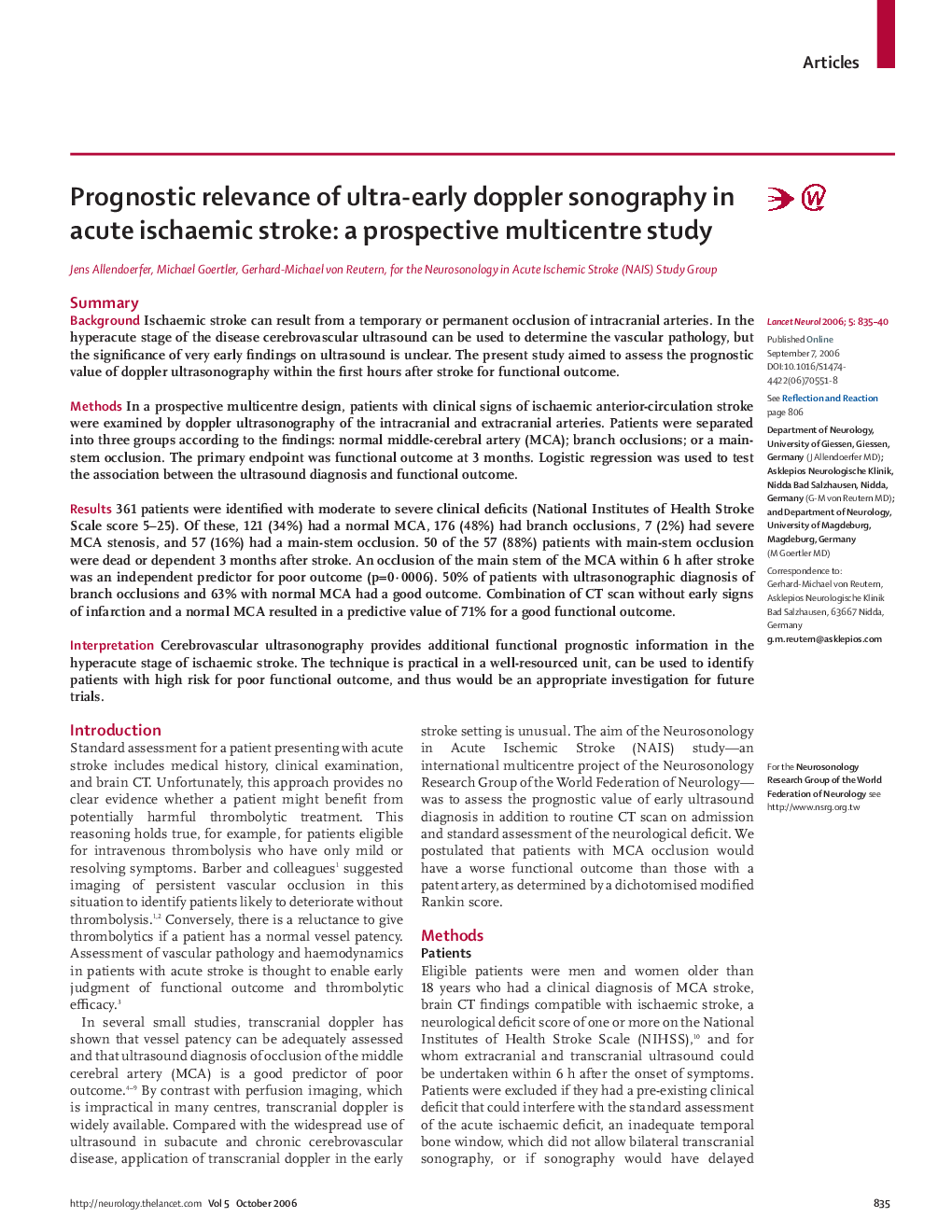| Article ID | Journal | Published Year | Pages | File Type |
|---|---|---|---|---|
| 3068157 | The Lancet Neurology | 2006 | 6 Pages |
SummaryBackgroundIschaemic stroke can result from a temporary or permanent occlusion of intracranial arteries. In the hyperacute stage of the disease cerebrovascular ultrasound can be used to determine the vascular pathology, but the significance of very early findings on ultrasound is unclear. The present study aimed to assess the prognostic value of doppler ultrasonography within the first hours after stroke for functional outcome.MethodsIn a prospective multicentre design, patients with clinical signs of ischaemic anterior-circulation stroke were examined by doppler ultrasonography of the intracranial and extracranial arteries. Patients were separated into three groups according to the findings: normal middle-cerebral artery (MCA); branch occlusions; or a main-stem occlusion. The primary endpoint was functional outcome at 3 months. Logistic regression was used to test the association between the ultrasound diagnosis and functional outcome.Results361 patients were identified with moderate to severe clinical deficits (National Institutes of Health Stroke Scale score 5–25). Of these, 121 (34%) had a normal MCA, 176 (48%) had branch occlusions, 7 (2%) had severe MCA stenosis, and 57 (16%) had a main-stem occlusion. 50 of the 57 (88%) patients with main-stem occlusion were dead or dependent 3 months after stroke. An occlusion of the main stem of the MCA within 6 h after stroke was an independent predictor for poor outcome (p=0·0006). 50% of patients with ultrasonographic diagnosis of branch occlusions and 63% with normal MCA had a good outcome. Combination of CT scan without early signs of infarction and a normal MCA resulted in a predictive value of 71% for a good functional outcome.InterpretationCerebrovascular ultrasonography provides additional functional prognostic information in the hyperacute stage of ischaemic stroke. The technique is practical in a well-resourced unit, can be used to identify patients with high risk for poor functional outcome, and thus would be an appropriate investigation for future trials.
